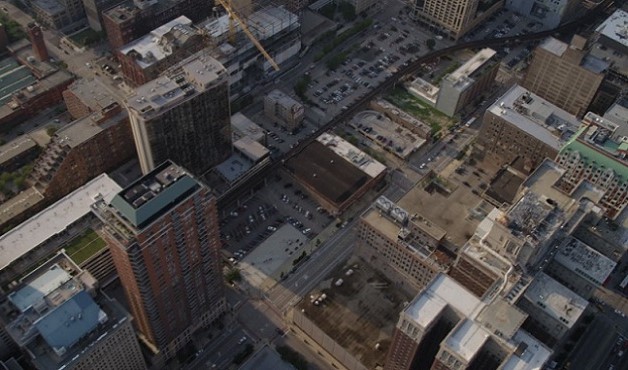
CHICAGO—The downtowns of Chicago and other cities across the US have attracted a remarkably diverse mix of new businesses, residents, retail and attractions in just a few years. But even with all this activity, many CBDs still have a relatively large number of vacant lots, according to a new study by COMMERCIALCafé. This could promote urban sprawl and make it more difficult to create the very things, such as affordable housing and new parks, that city residents say they need the most.
COMMERCIALCafé used data from Yardi Matrix and PropertyShark, along with online government records, to inventory all vacant parcels of more than 0.5 acres located in 25 central business districts, along with in-depth research on construction activity and a survey of residents that gauges what developments local urban populations find most desirable.
“The country's most active commercial markets, New York City and Chicago, are neck-and-neck in the middle of the list, each home to roughly 17 acres of downtown vacant lots,” COMMERCIALCafé says.
In the past five years, developers built nearly 30 million square feet of property in New York City, far more than in in any other US CBD. That's three and a half times more than in Dallas. Chicago lands third on the list of cities with the most CBD development in the last five years—builders there finished nearly seven million square feet of property, with an almost 50-50 split between housing and office space.
“One may reasonably expect the largest, busiest cities to have maxed out their infill potential,” COMMERCIALCafé adds. But even though Los Angeles and Washington DC do fit the bill, having just 12.61 acres and 8.87 acres of undeveloped urban land, respectively, the data show that the densest US urban cores, each with between 6.29 and 8.57 empty acres, are Tampa, Sacramento, Buffalo, Kansas City and Milwaukee.
The cities with the highest infill potential tend to be the sprawling metros of the South, West and Southwest. The CBDs of Dallas, Austin, San Antonio, and Houston, for example, have a combined 208 acres of vacant lots, COMMERCIALCafé says. Dallas tops the 25-city list with 86 acres. Las Vegas comes in second with 75 acres, and Austin, at 71, rounds out the top three.
It might not be surprising that these metros, each surrounded by wide expanses of empty land, would prefer to spread out rather than build up. But COMMERCIALCafé points out that ignoring opportunities for infill development could impact a city's livability and the desire of many to live there. In its survey of 1,549 people living in these metros, housing, especially affordable housing, was by far considered the most pressing need. And walkability was considered the most beneficial transportation improvement.
Overall, the 25 CBDs studied have a total of 584 vacant acres, enough to fill roughly 442 NFL-standard-size football fields. COMMERCIALCafé says “it invites the obvious question: why sprawl, if there is still plenty of potential to reinvest in the city core?”
© 2025 ALM Global, LLC, All Rights Reserved. Request academic re-use from www.copyright.com. All other uses, submit a request to [email protected]. For more information visit Asset & Logo Licensing.








